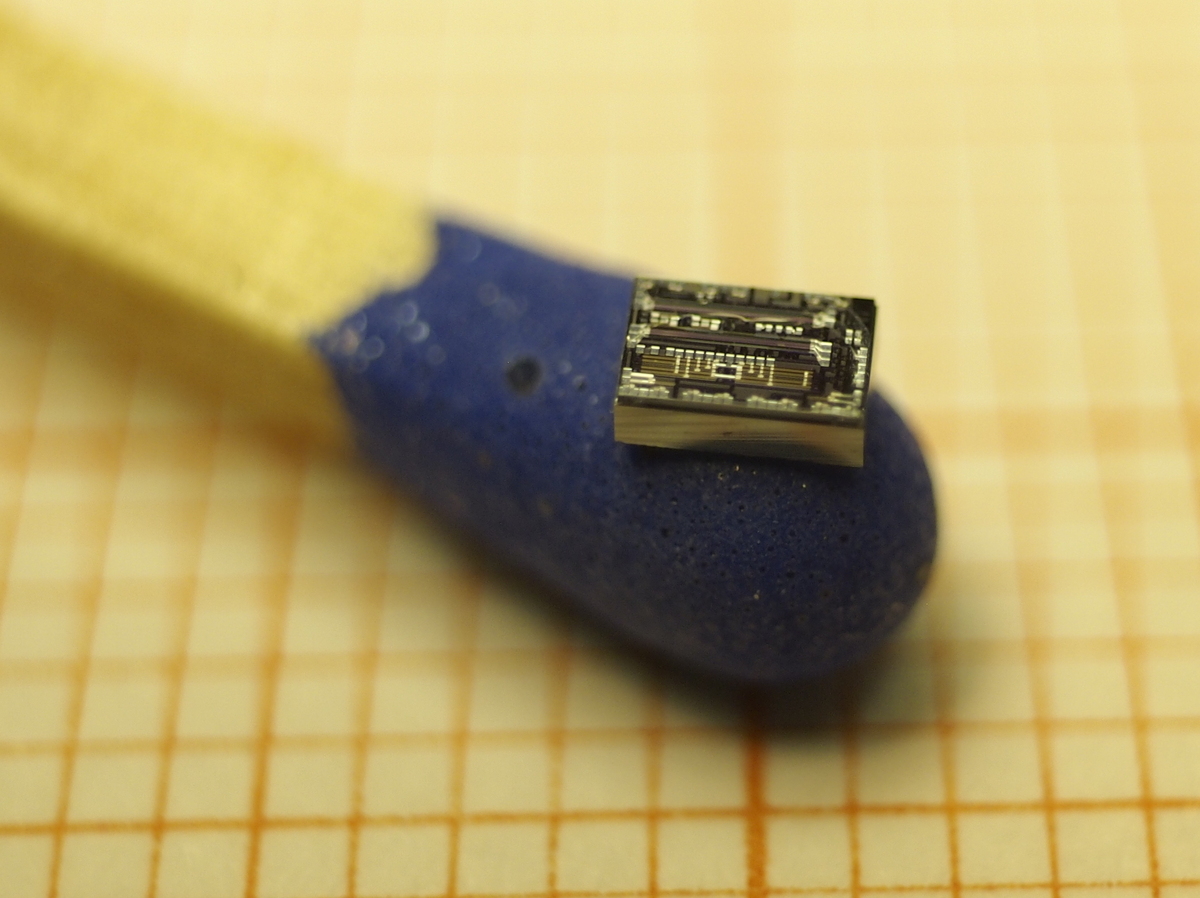Hybrid Photonic Integrated Circuits
Analogous to the integration and miniaturization of electrical circuits decades ago, the integration of optical circuits is now driving the proliferation of optical technology. PIC with a multitude of optical elements on a single chip, are key elements not only for the field of optical communication but also in other fields, e.g., metrology and bio-sensing.
Especially silicon photonics is a very promising integration platform. It allows for high-density integration with waveguide sizes in the order of few hundred nanometers, and several building blocks such as photo-detectors, modulators, and passive waveguiding elements are readily available. The miniaturization of optical systems is not only beneficial in terms of reduced footprint and easy parallelization of elements, but also stability of e.g. interferometric systems is tremendously increased. While the system concept, design and layout is done at IPQ, the fabrication is realized together with specialized photonic foundry services, allowing to access complex CMOS compatible fabrication processes. However, besides all benefits of the silicon photonic integration, silicon as an optical material falls short of certain properties that are indispensable for high-performance devices. In particular silicon does not feature any second order nonlinearity which is a key feature for high quality phase modulators. These deficiencies can be overcome by using the silicon-organic hybrid (SOH) integration, available at KIT. Organic materials, combined with silicon-photonic waveguides can complement the functionality of silicon. Functionalization of the silicon with the organic material can be done in a simple backend process for e.g., by spin coating the material. With this approach highly efficient SOH modulators with record-low energy consumption are being fabricated at IPQ.
| Title | Short Description | From |
|---|---|---|
| ATHENS - Funding ID: 101167540 | "Active Hybrid Photonic Integrated Circuits for Ultra-Efficient Electro-Optic Conversion and Signal Processing" - (ATHENS) - funded by the European Research Council (ERC). |
|
| CIELO - Funding ID: 101187231 | "Cavity-Integrated Electro-Optics: Measuring, Converting and Manipulating Microwaves with Light" - (CIELO) - funded by Horizon EIC of the European Union (EU). |
2025-02-01 |
| ELLIPTIC - Funding ID: 101187515 | "ExpLoring Lithium tantalate on Insulator PhoTonic Integrated Circuits" - (ELLIPTIC) - funded by Horizon EIC of the European Union (EU). |
2025-02-01 |
| HDLN - Funding ID: 101113260 | HDLN (High-Density Lithium Niobate Photonic Integrated Circuits) |
2023-05-01 |
| HyPERION - Funding ID: SFB 1527 | „Optoelectronic signal processing for high-field EPR spectroscopy“; Project A02 within the Collaborative Research Centre (CRC) funded by the German Research Association (Deutsche Forschungsgemeinschaft, DFG) at Karlsruhe Institute for Technology (KIT) |
2022-07-01 |
| INTERSOUL - Funding ID: 16KISK244K | „Hoch-Integrierte Silizium-Organik Modulatoren für 6G-xHaul und Kryo-Kommunikation – (INTERSOUL)“ funded by the German Ministry of Eduaction and Research (Bundesministerium für Bildung und Forschung BMBF) |
2022-10-01 |
| Open6GHub - Funding ID: 16KIS010 | Open 6GHub |
2021-08-01 |








